ZHCSNP0A august 2020 – march 2021 BQ25171-Q1
PRODUCTION DATA
- 1
- 1 特性
- 2 应用
- 3 说明
- 4 Revision History
- 5 Pin Configuration and Functions
- 6 Specifications
- 7 Detailed Description
- 8 Application and Implementation
- 9 Power Supply Recommendations
- 10Layout
- 11Device and Documentation Support
- 12Mechanical, Packaging, and Orderable Information
6.7 典型特性
CIN = 1µF,COUT = 1µF,VIN = 5V,VOUT = 3.8V(除非另有说明)
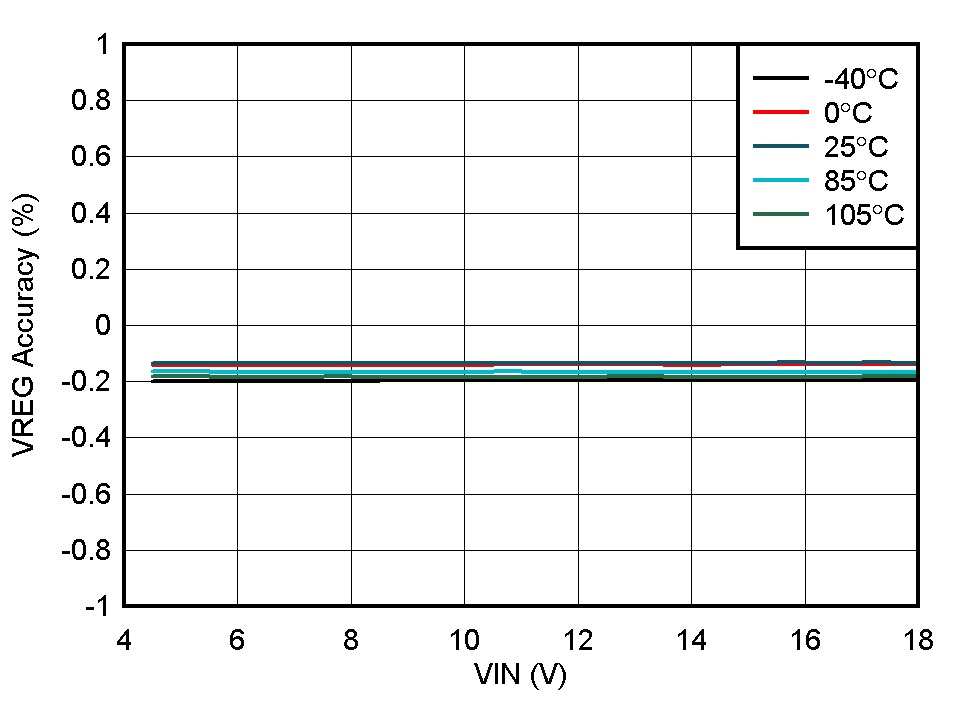
| IOUT = 10mA | VOUT = 4.2 V |
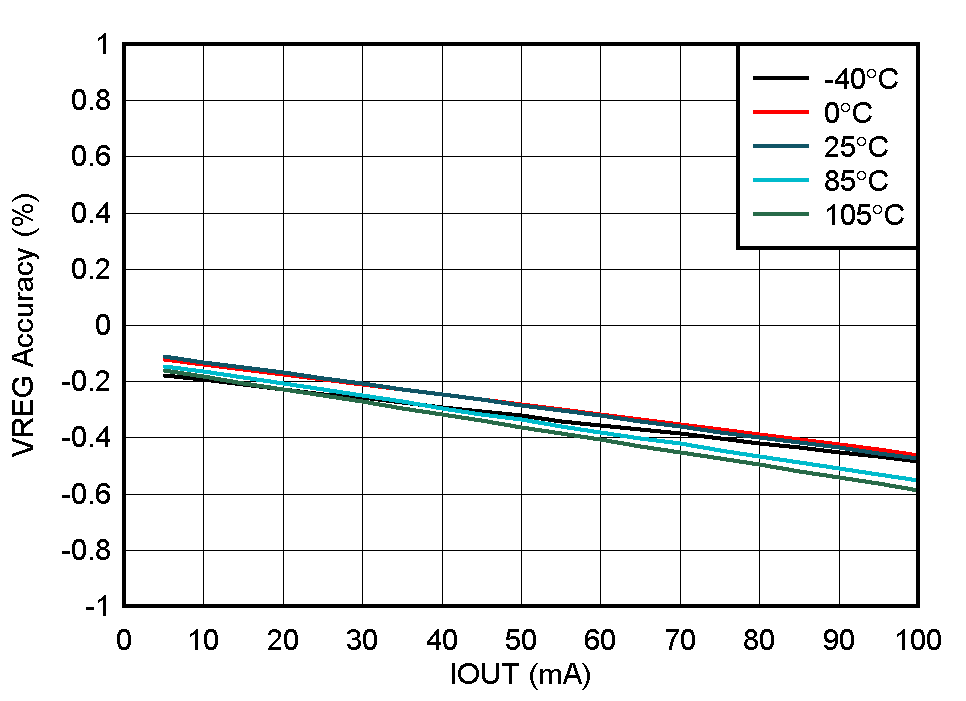
| VIN = 5V | VOUT = 4.2 V |
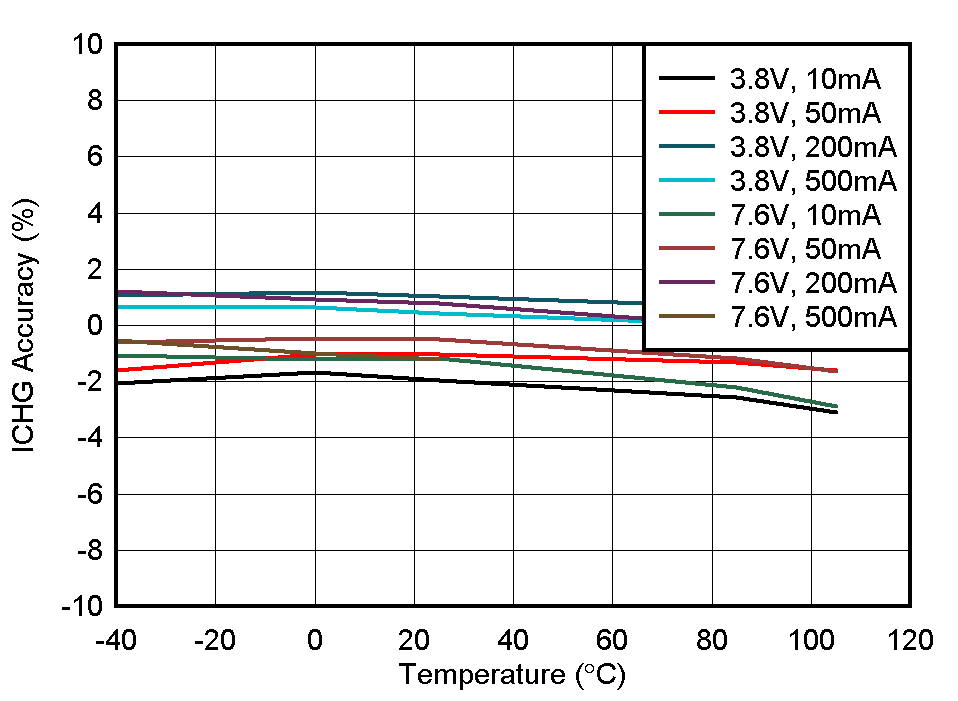
| VIN = 5V 和 12V | VOUT = 3.8V 和 7.6V | |
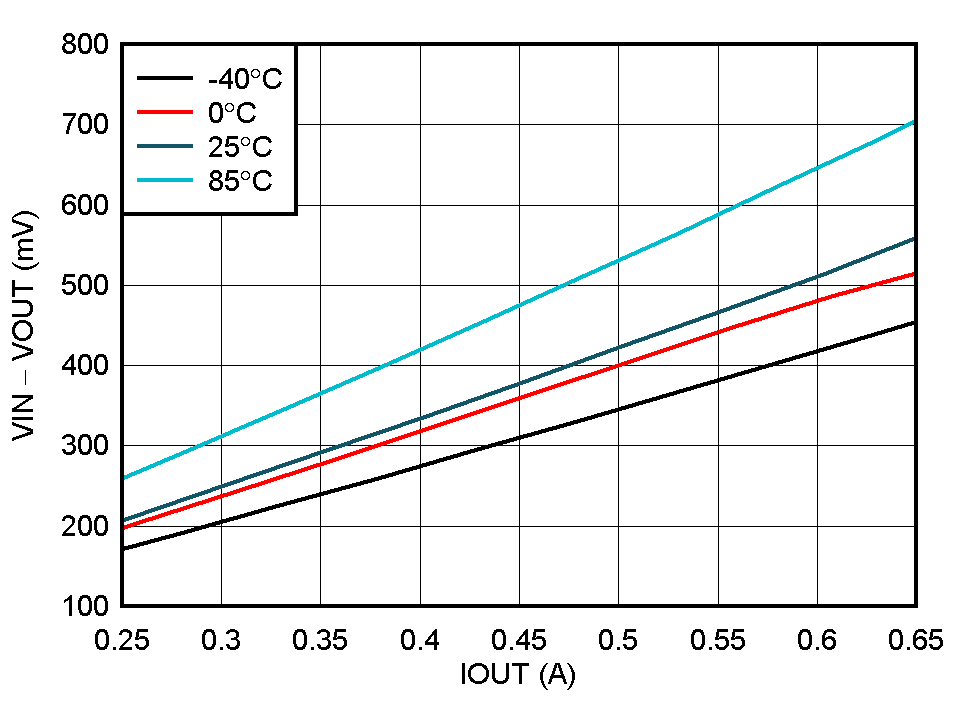
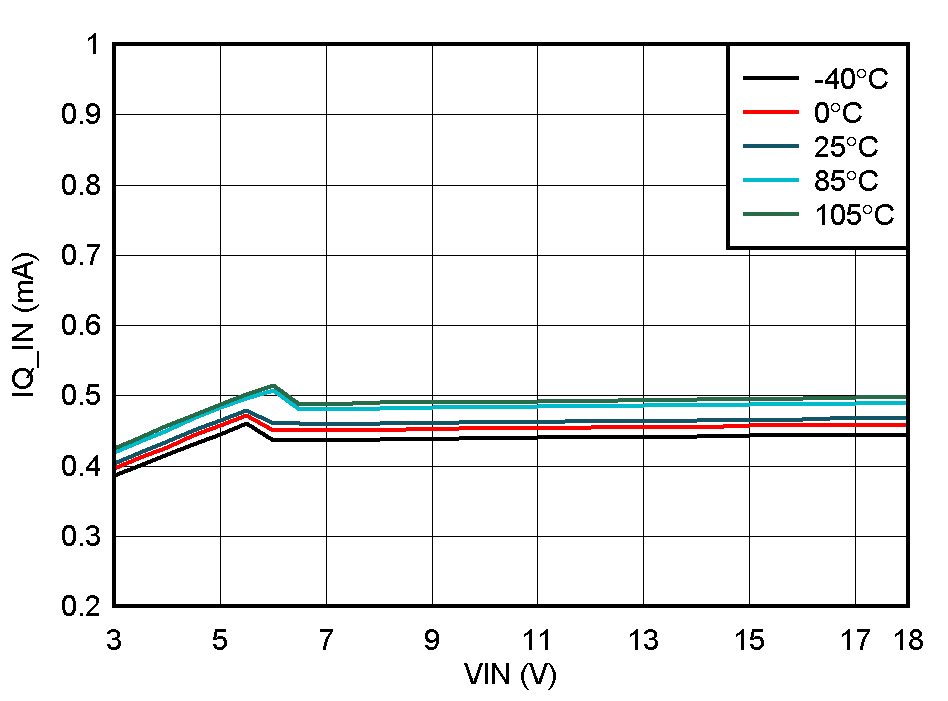
| CE 引脚 = 低电平 | ICHG = 0A |

| VOUT = 4.35 V |
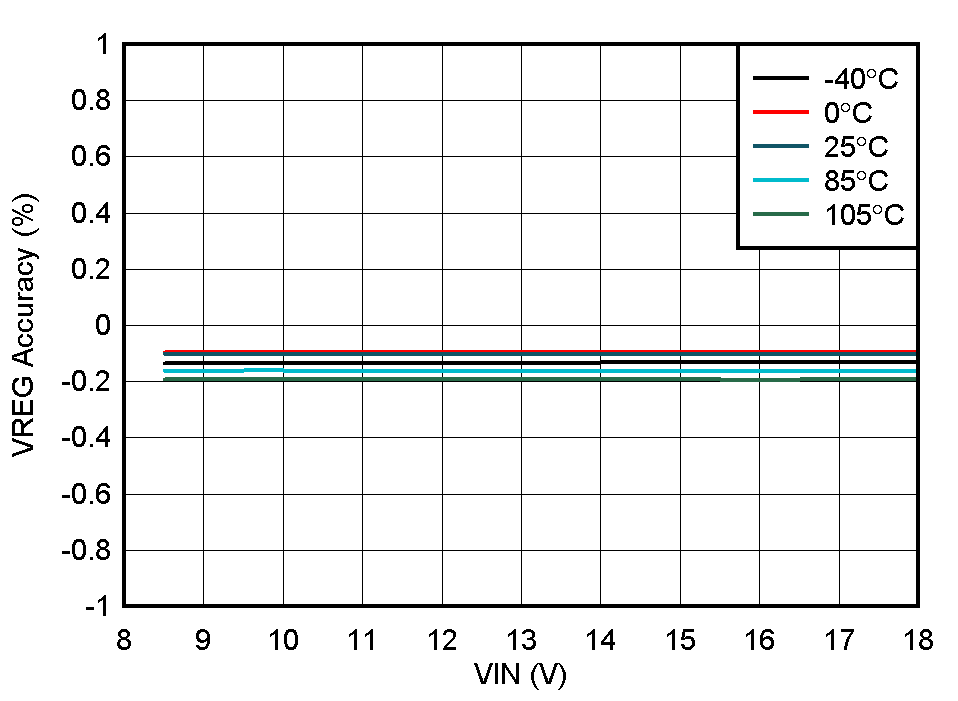
| IOUT = 10mA | VOUT = 8.4 V |
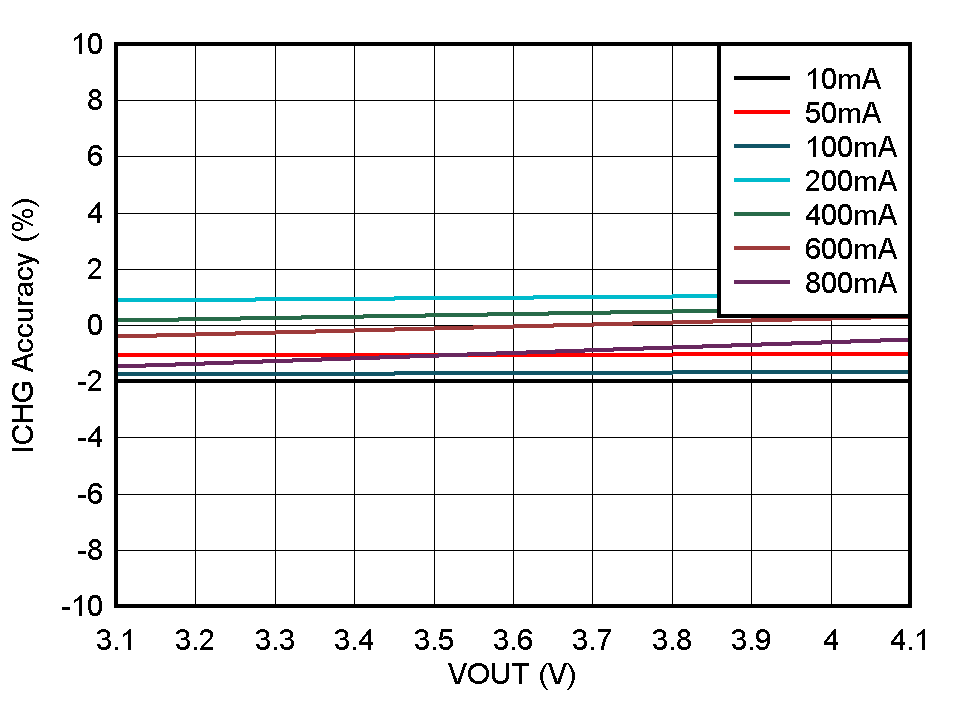
| VIN = 5V | 温度= 25ºC |
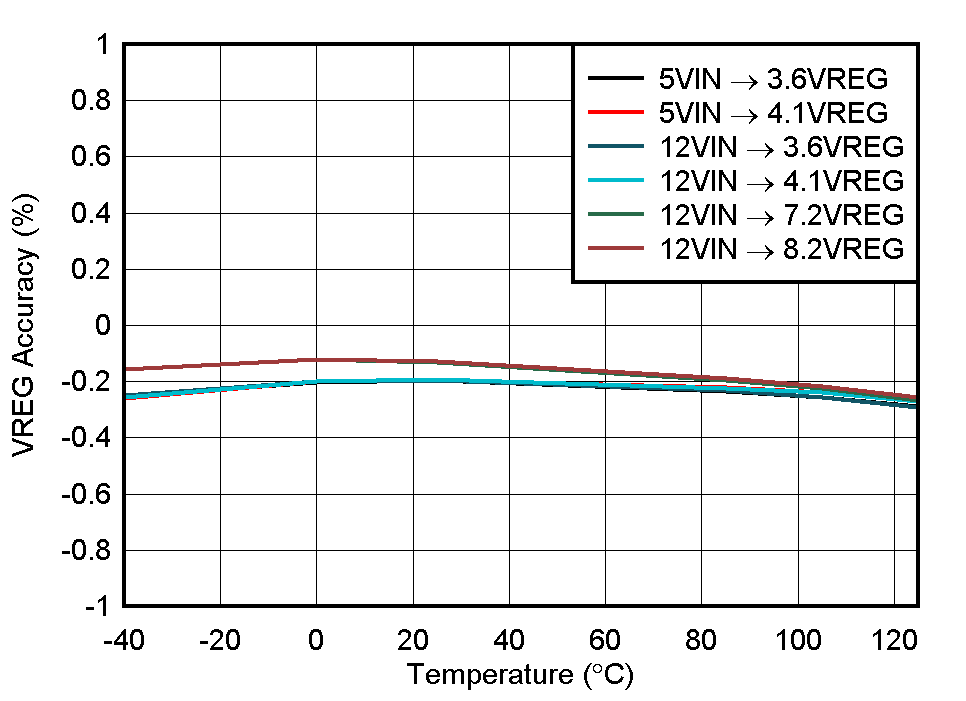
| VIN = 5V 和 12V | IOUT = 10 mA |
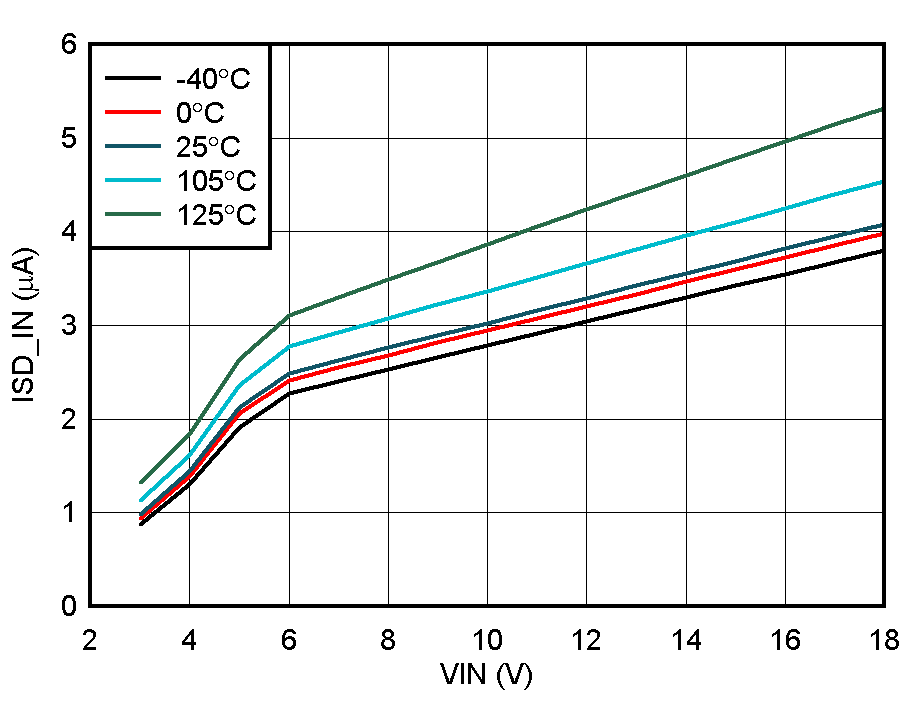
| CE 引脚 = 高电平 | VOUT=0V |
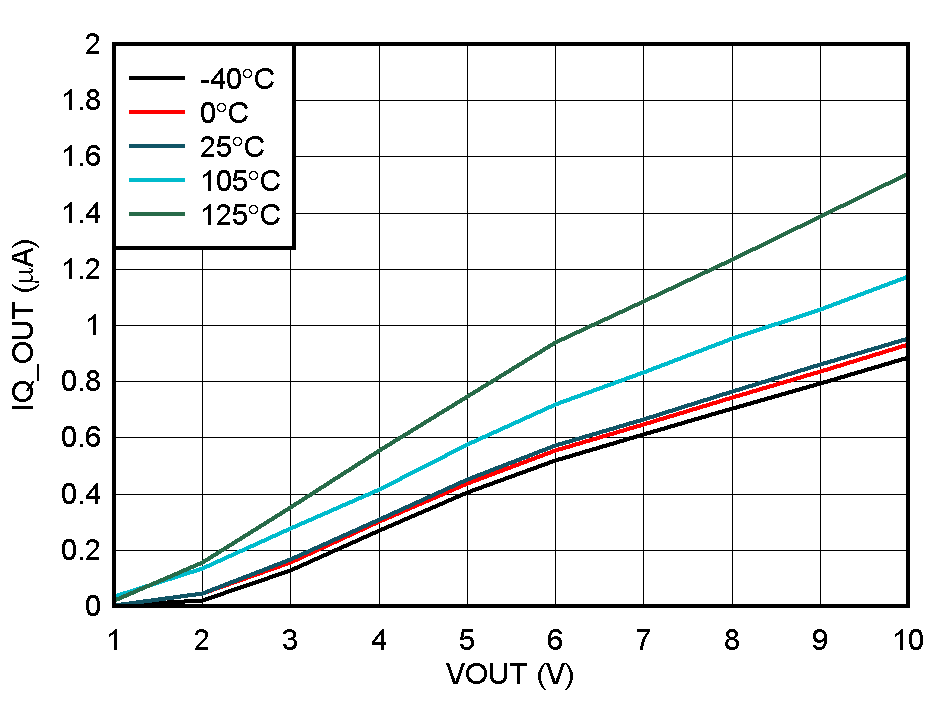
| VIN = 0V |